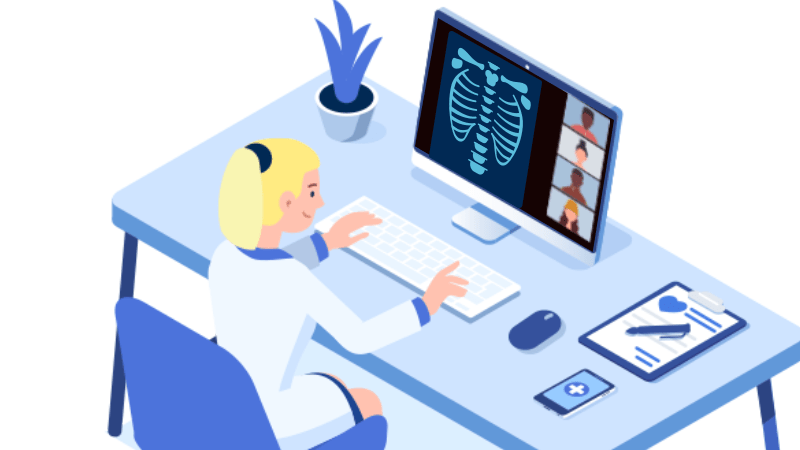Samantha Lau, MD | Assistant Professor, Brookdale Department of Geriatrics and Palliative Medicine | Icahn School of Medicine at Mount Sinai
During my Geriatrics and Palliative Medicine Fellowship, my research project addressed the challenge of making core geriatrics principles interesting and relevant to a new generation of learners. As part of this project, I rebuilt a didactic session in our Geriatrics rotation using the flipped classroom model, an Aquifer Geriatrics case, and a range of teaching techniques to create an engaging, student-centered session.
The Learning Environment
At the Icahn School of Medicine at Mount Sinai, we have 140 students every year rotate with our department as part of their Ambulatory Care – Geriatrics and Medicine clerkships. Every 6 weeks, we have about 18 students on inpatient and outpatient clinical services, with exposure to geriatrics primary and consultative services, palliative care, nursing home medicine, and innovative models of care such as the Mount Sinai Visiting Doctors and Hospital at Home programs, which provide primary care and acute hospital care, respectively, in a patient’s home. These diverse clinical experiences are complemented by didactics on Friday afternoons. Didactic topics encompass geriatric syndromes (dementia, urinary incontinence), medication management and reconciliation, geriatric assessment, and hazards of hospitalization.
Given my inpatient clinical focus, I chose hazards of hospitalization–an important topic with many key teaching points–for my lecture. This didactic had previously utilized a more traditional lecture format and had seen a decline in student evaluations. Students shared that the material seemed redundant and too theoretical and that the format was not engaging. Depending on the timing of their rotation components, the students had variable knowledge and clinical experience on the hazards of hospitalization. Hence, a didactic reviewing the basics of hazards felt redundant to some but critically important to others.
New Format: Flipping the Classroom
To revamp the lecture, we decided to implement a flipped classroom model. Students were instructed to complete the Aquifer Geriatrics case 23 on the hazards of hospitalization prior to the in-person didactic session. Completing the online module in advance provided students with a shared knowledge-base, enabling them to engage at the higher levels of application, analysis, and evaluation with case-based vignettes and equipping them to make connections to patients they were seeing during their rotations.
In our first iteration of the flipped classroom lecture, we utilized one multi-part case and kept the learners together in one large group for the entire lecture. We dove deeper into principles covered in the Aquifer module, focusing on delineating delirium from dementia, recognizing pressure injuries, and correlating loss of activities of daily living with mortality. While students appreciated the case-based approach, they found it difficult to engage in such a large group setting.
Iterations to Improve Engagement
For the next iteration, we added our own board-style questions to highlight key principles as well as discrete tools (CAM and ePrognosis calculators) that students could utilize on the wards. To encourage more active participation, we broke the larger group into small groups to calculate the prognosis of various sample patients. Patients differed in their comorbidities and functional status at discharge. Small groups were asked to give an educated guess of 1-year mortality, prior to seeing the answer on the calculator, to encourage students to apply concepts and evaluate what factors were important for prognosis.
In subsequent lectures, we divided the large, multi-part case, which walked through a theoretically patient’s admission to discharge, with key hazards of hospitalization sprinkled in between, into individual mini-cases with associated board-style questions that focused on key teaching points. The interactive, case-based session was interspersed with multimedia components (ie. video of delirium) as well as specific clinical tools (ePrognosis calculator and principles of staging pressure injury). We also utilized Poll Everywhere software to allow every student to participate. Using the online polling allowed each student to commit to an answer, after they had individually analyzed the clinical scenarios, without the pressure of being incorrect. This created a safe learning environment that also maintained student engagement and participation.
Lessons Learned & Student Feedback
At the start of the lecture, we encourage emphasizing the potential applications and reasons that each student, regardless of their planned specialty, will benefit from the lecture material. This simple briefing improved student buy-in and allowed students to focus on the most pertinent information.
We also recommend breaking into smaller groups and using polling software to maintain engagement and allow students to utilize the knowledge gained from completing the Aquifer module. Completion of the online module in advance of the didactic allowed the group to build on a shared knowledge base and to focus on the application of principles. Students appreciated the added depth, particularly with specific clinical tools they could use with their patients, rather than a repetition of the basic principles.
Student evaluations revealed a positive response to the new flipped classroom model; learners appreciated the case-based learning and pragmatic application of specific clinical tools. Furthermore, student ratings of educational content and format also improved, making this rebuild of an essential geriatrics didactic a success.



